12 Best Native Plants for Knoxville, TN
BY ABDUL WADOOD | APRIL 4TH, 2023 | KNOXILLE, LAWN CARE, TENNESSEEKnoxville’s moderate climate and ample rainfall supports a variety of beautiful native plants that can add color and texture to your garden. These native plants offer advantages over non-native species, some of which may not thrive in Eastern Tennessee’s unique climate.
Here is a look at 12 gorgeous native plants for your Knoxville landscape.
In this article:
- Why Consider Native Plants Over Non-Natives?
- Best Native Plants for Your Knoxville Lawn
- How To Choose the Best Native Plants for Knoxville
- Where To Find Native Plants in Knoxville
Why Should You Consider Native Plants Over Non-Natives?
- They are easier to maintain as they naturally thrive in Knoxville’s climate.
- They attract birds, butterflies, native bees, moths, and other beneficial wildlife to your garden.
- They require less water as they naturally adapt to the local environmental conditions.
- They need fewer pesticides and fertilizers.
As you can see, native plants are easier to maintain and better for the environment. Let’s take a look at the best native plants for Knoxville lawns.
Best Native Plants for Your Knoxville Lawn
1. Virginia Bluebell (Mertensia Virginica)
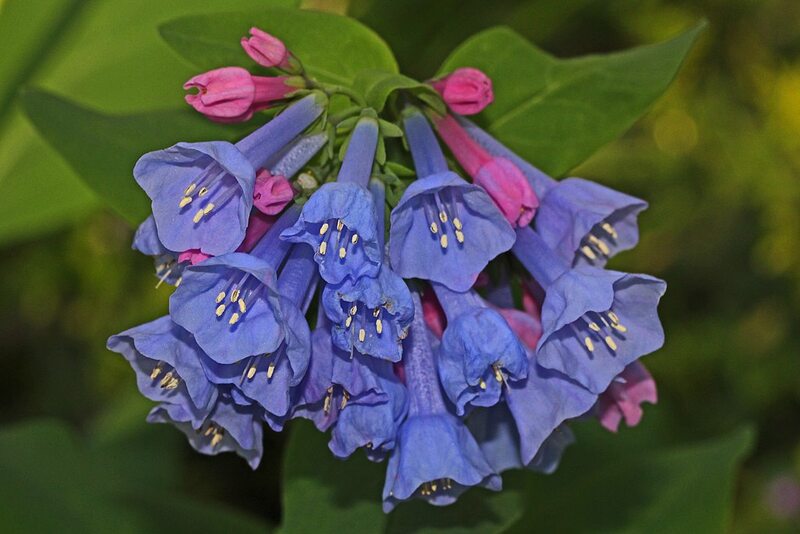
Photo Credit: Judy Gallagher / Wikimedia Commons / CC BY 2.0
Virginia bluebells can enhance the appearance of any garden because they feature colors that aren’t normally seen in the area. They bloom in the spring and disappear for the rest of the year. Virginia bluebells look especially beautiful when they are in full bloom.
Virginia bluebells can grow about one or two feet in height and require little maintenance. Bluebell blossoms are bell-shaped, and each flower has approximately five petals.
Growth habit: Flower
Mature size: Up to 2 feet tall and 2 feet wide
Duration: Perennial
Foliage: Green
Sunlight needs: Partial to full shade
Soil preferences: Moist, well-drained soil
Water needs: High; can’t survive in drought conditions.
Potential hazards: Toxic to humans and pets
2. Winterberry (Ilex Verticillata)
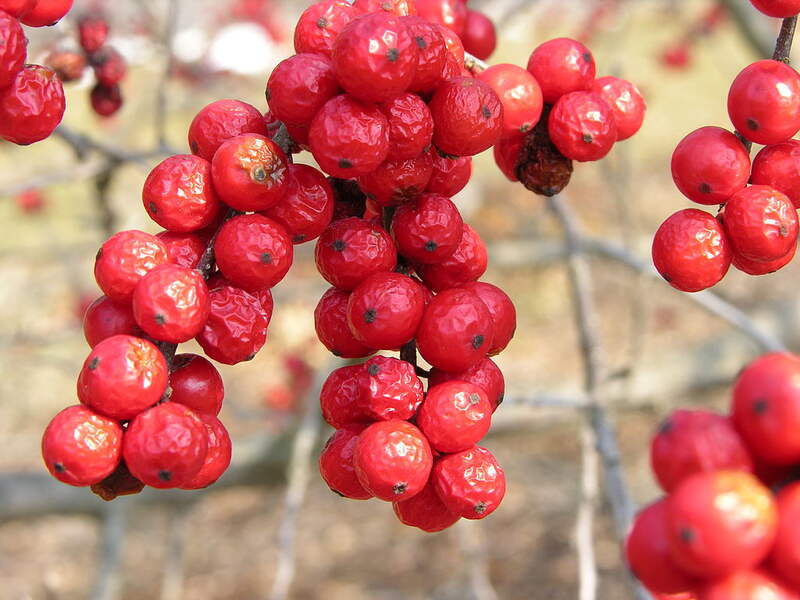
Photo Credit: Derek Ramsey / Wikimedia Commons / CC BY-SA 2.5
Winterberry is a fast-growing, medium-sized tree that produces red berries in winter that birds love to eat. The leaves of the tree are long and elliptical. The axils of winterberry leaves contain delicate and radially symmetrical white flowers arranged in small clusters.
Growth habit: Tree
Mature size: Up to 60 feet tall and 49 feet wide
Duration: Perennial
Foliage: Dark green
Sunlight needs: Full sun
Soil preferences: Moist, well-drained soil
Water needs: High
Potential hazards: Toxic to humans and pets
3. Butterfly Weed (Asclepias Tuberosa)
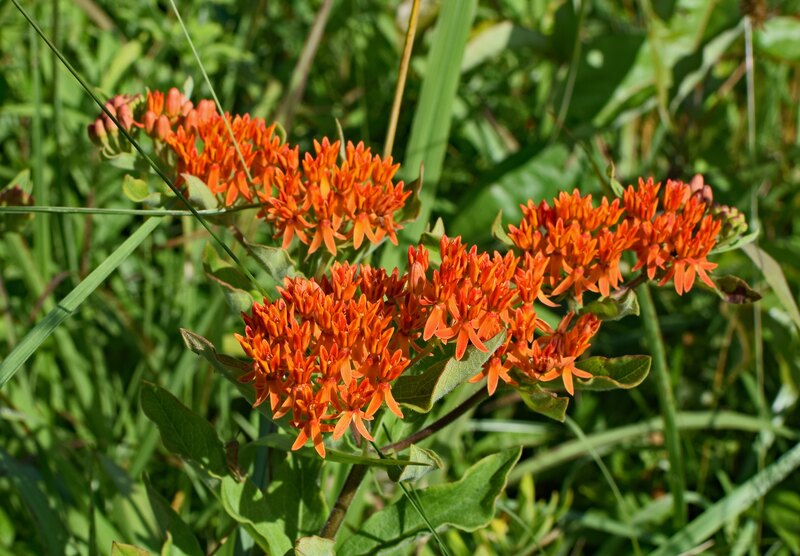
Photo Credit: PxFuel
Butterfly weed, also known as butterfly milkweed, consist of large clusters of orange flowers. Thanks to their bright color, they attract many pollinators, especially monarch butterflies.
Butterfly weed blooms throughout the summer and grows well in full sun. They burst open in the fall to reveal their white, soft, and fluffy seeds.
Growth habit: Flower
Mature size: Up to 2 feet tall and 2 feet wide
Duration: Perennial
Foliage: Dark green
Sunlight needs: Full sun
Soil preferences: Sandy, well-drained soil
Water needs: Low, high drought tolerance
Potential hazards: Toxic to humans and pets
4. Wild Geranium (Geranium Maculatum)
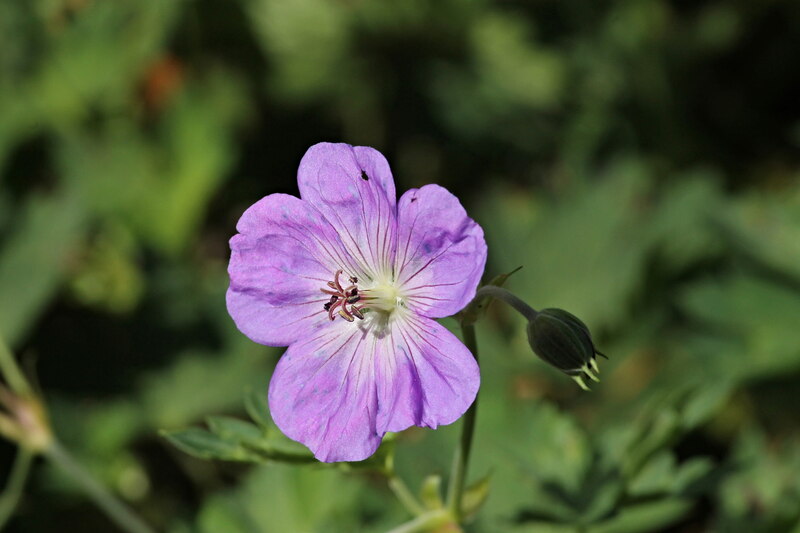
Photo Credit: PxFuel
Wild geraniums are a great choice for Knoxville lawns. They are highly versatile and attractive, with flowers in beautiful shades of pink and lavender. Wild geraniums bloom from late spring to early summer, and the flowers attract butterflies, bees, and other pollinators.
Wild geraniums grow well in full sun or partial shade and perform best in moist soils.
Growth habit: Flower
Mature size: Up to 3 feet tall and 2 feet wide
Duration: Perennial
Foliage: Green
Sunlight needs: Full sun or partial shade
Soil preferences: Moist soil
Water needs: Needs high watering during the growth period. Once matured, it requires watering only in drought conditions.
Potential hazards: Non-toxic to children. Toxic to pets.
5. Bee Balm (Monarda Didyma)
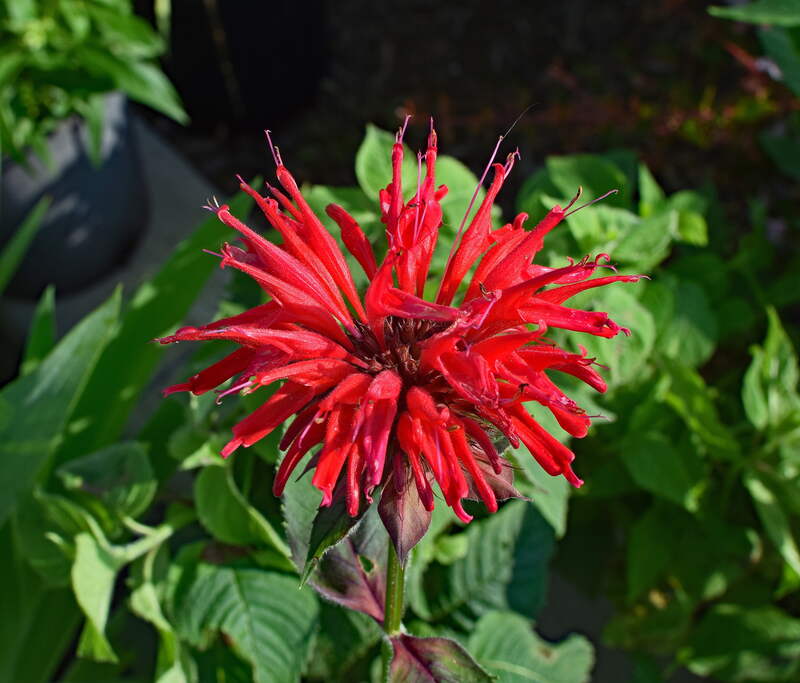
Photo Credit: PxFuel
Bee balm features beautiful bright red, tubular flowers that attract bees, butterflies, and other pollinators. It is a summer bloomer, and its seed heads are a food source for songbirds during fall and winter.
The leaves and stems of bee balms have a minty fragrance as they are part of the mint family. They perform best under full sun and moist soil.
Growth habit: Flower
Mature size: Up to 4 feet tall and 3 feet wide
Duration: Perennial
Foliage: Dark green
Sunlight needs: Full sun
Soil preferences: Moist soil
Water needs: High
Potential hazards: Non-toxic
6. River Oats (Chasmanthium Latifolium)
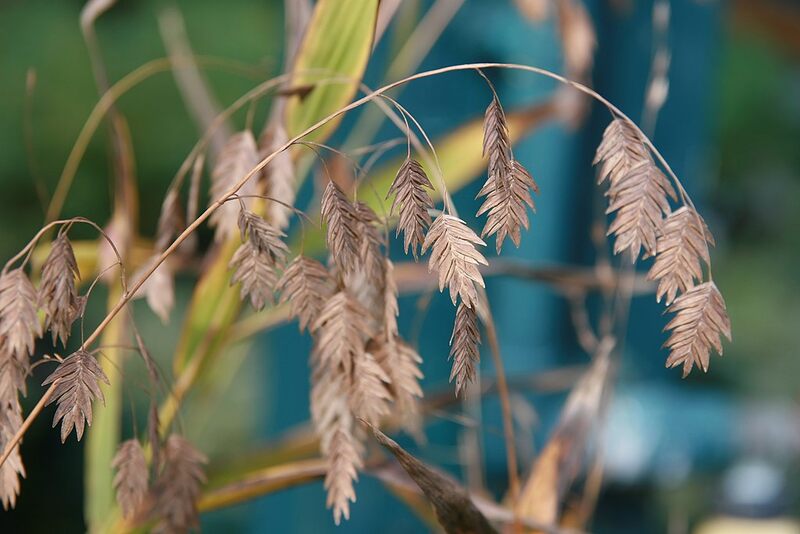
Photo Credit: David J. Stang / Wikimedia Commons / CC BY-SA 4.0
River oats are low-maintenance, native cool-season perennial ornamental grass that can increase the appearance of your lawn. They have showy seed heads that can add diversity to your yard.
River oats bloom from late summer to early fall, and the seed heads turn light brown as the season progresses. The seed heads only appear during summer and stay for about three months. River oats tolerate drought well once they establish a healthy root system.
Growth habit: Flower
Mature size: Up to 5 feet tall and 2 feet wide
Duration: Perennial
Foliage: Dark green
Sunlight needs: Partial shade
Soil preferences: Moist, well-drained soil
Water needs: High
Potential hazards: Toxic to humans and pets
7. Woodland Phlox (Phlox Divaricata)
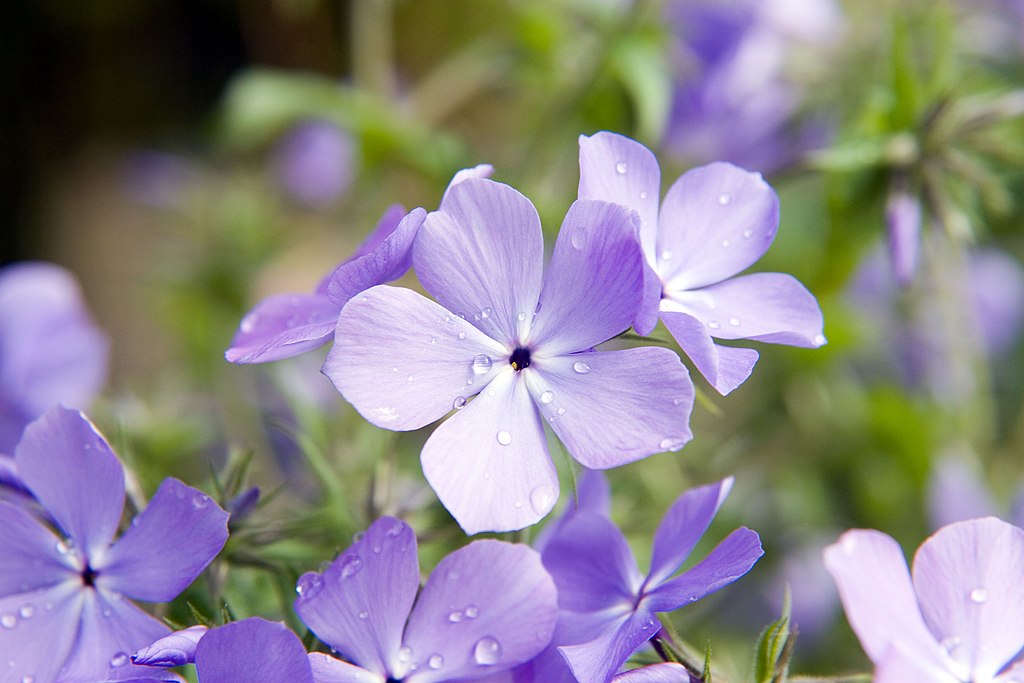
Photo Credit: David J. Stang / Wikimedia Commons / CC BY-SA 4.0
Woodland phlox is a beautiful shade-tolerant flower that blooms in spring for about a month and produces dainty petals in various pastel colors, including white, lavender, pink, or blue. Woodland phlox appears as a leafy green mound for the rest of the year.
Woodland phlox grows up to 1.5 feet tall but spreads slowly. It attracts butterflies and other pollinators.
Growth habit: Flower
Mature size: Up to 1.5 feet tall and 3 feet wide
Duration: Perennial
Foliage: Dark green
Sunlight needs: Partial shade
Soil preferences: Moist, well-drained soil
Water needs: Moderates. Tolerates medium-dry and medium-wet soils.
Potential hazards: Non-toxic
8. White Wakerobin (Trillium Grandiflorum)
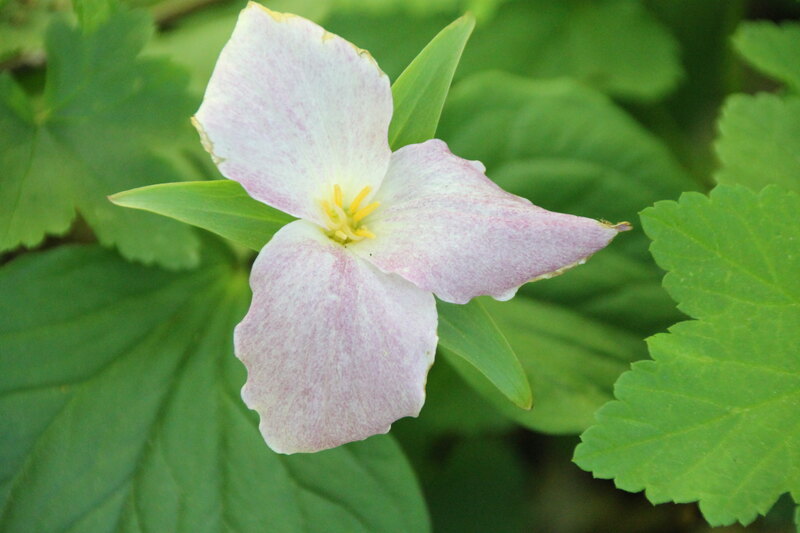
Photo Credit: PxFuel
White wakerobin are also known as sweet white trillium. As the name suggests, they emit a sweet odor. They bloom between late spring and early summer and are showy, especially in full bloom. The petals start white and turn slightly pink as they age.
White wakerobin have dark purplish ovaries in the center. They attract bees, moths, and other pollinators.
Growth habit: Flower
Mature size: Up to 2 feet tall and a foot spread
Duration: Perennial
Foliage: Green
Sunlight needs: Partial to full shade
Soil preferences: Moist, well-drained soil
Water needs: Requires frequent watering when newly planted. Once grown, you don’t need to water them frequently.
Potential hazards: Mildly toxic to humans when eaten. Toxic to pets.
9. Elderberry (Sambucus Nigra)
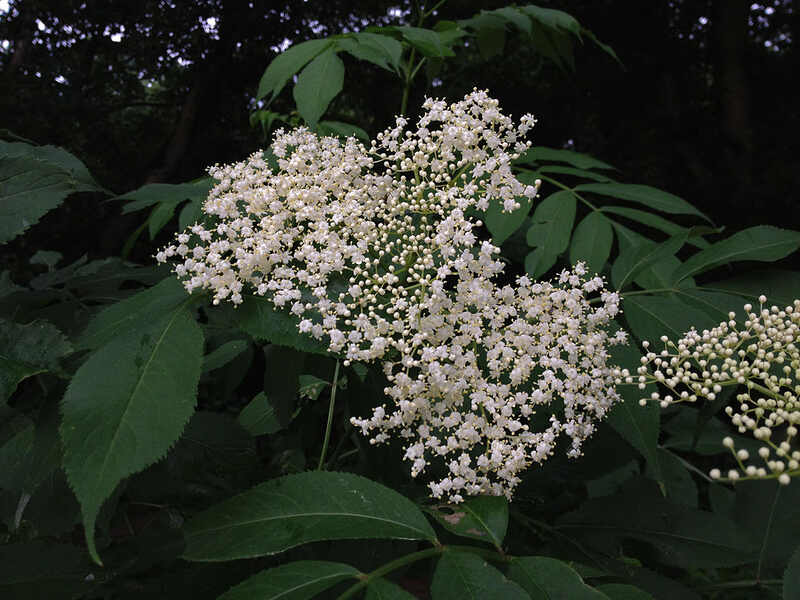
Photo Credit: Fritzflohrreynolds / Wikimedia Commons / CC BY-SA 3.0
Elderberries are edible, fast-growing plants that can grow in partly shady areas. They sprout white flowers during late spring and produce dark purple or black edible berries in late summer or sometimes early fall. Elderberries look beautiful and attract pollinators such as bees and butterflies.
Growth habit: Edible plant
Mature size: Up to 12 feet tall and 6 feet wide
Duration: Perennial
Foliage: Bright lemon- to lime-green
Sunlight needs: Full shade; can tolerate partial shade.
Soil preferences: Moist, fertile, well-drained soil
Water needs: Moderate
Potential hazards: Toxic to humans when consumed raw. Toxic to pets.
10. Bottlebrush Buckeye (Aesculus Parviflora)
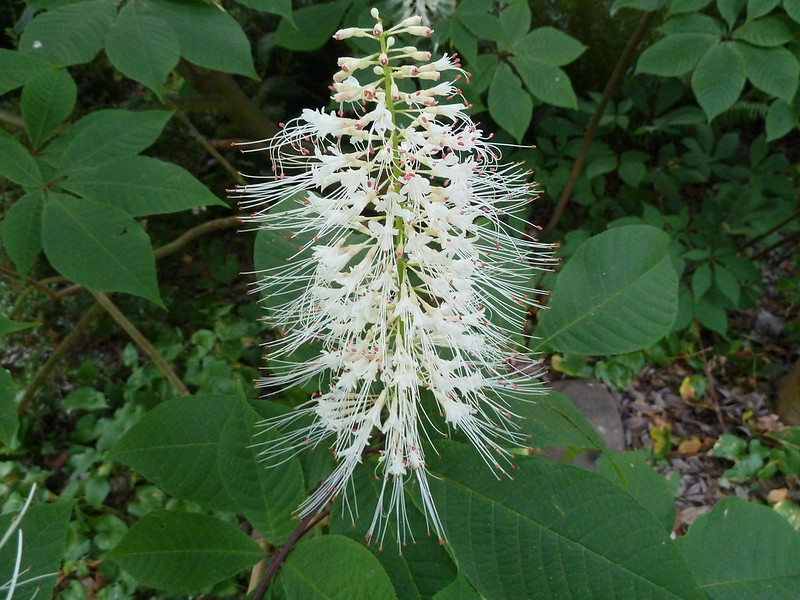
Photo Credit: Wendy Cutler / Flickr / CC BY 2.0
Bottlebrush buckeye is an attractive deciduous shrub that blooms in summer. When it blooms, it displays white flower clusters that are long and fluffy. Unlike other buckeyes, bottlebrush retains its foliage well into fall.
Bottlebrush buckeyes require low maintenance and are more resistant to diseases and insects. They have a slow growth rate. But once grown, their flowers can attract varieties of butterflies and hummingbirds.
Growth habit: Shrub
Mature size: Up to 8 feet tall and 12 feet wide
Duration: Perennial
Foliage: Dark green
Sunlight needs: Full sun or partial sun
Soil preferences: Moist, well-drained soil
Water needs: Moderate
Potential hazards: Toxic to humans and pets
11. Prairie Aster (Machaeranthera Tanacetifolia)
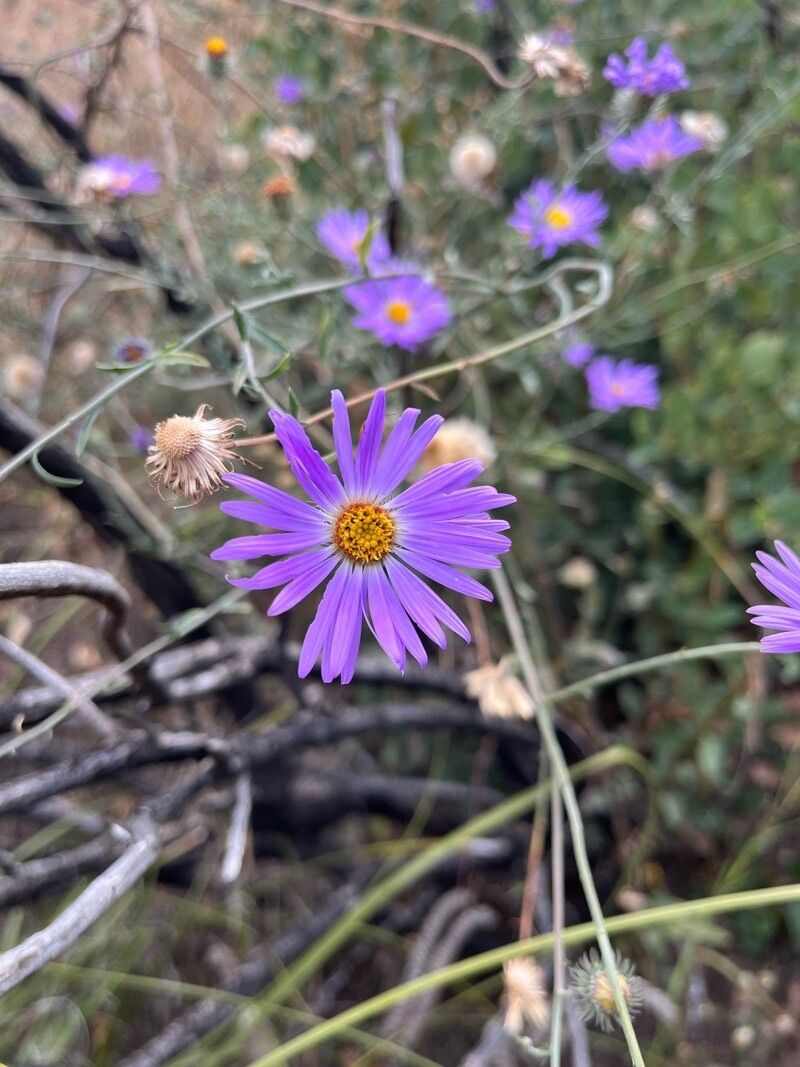
Photo Credit: Plant Net
Prairie aster is an attractive wildflower that requires low maintenance. They grow best under full sun and in loamy, well-drained soil. They bloom from late summer to mid-fall. During their bloom period, the petals appear violet with yellowish centers.
The bright colors of prairie asters attract bees, butterflies, and other pollinators. The center portion of the flower turns purple once it is pollinated.
Growth habit: Flower
Mature size: Up to 6 feet tall and 3 feet wide
Duration: Perennial
Foliage: Pale blue-green
Sunlight needs: Full sun
Soil preferences: Loamy, well-drained soil
Water needs: Moderate
Potential hazards: Non-toxic
12. Solomon’s Seal (Polygonatum Biflorum)
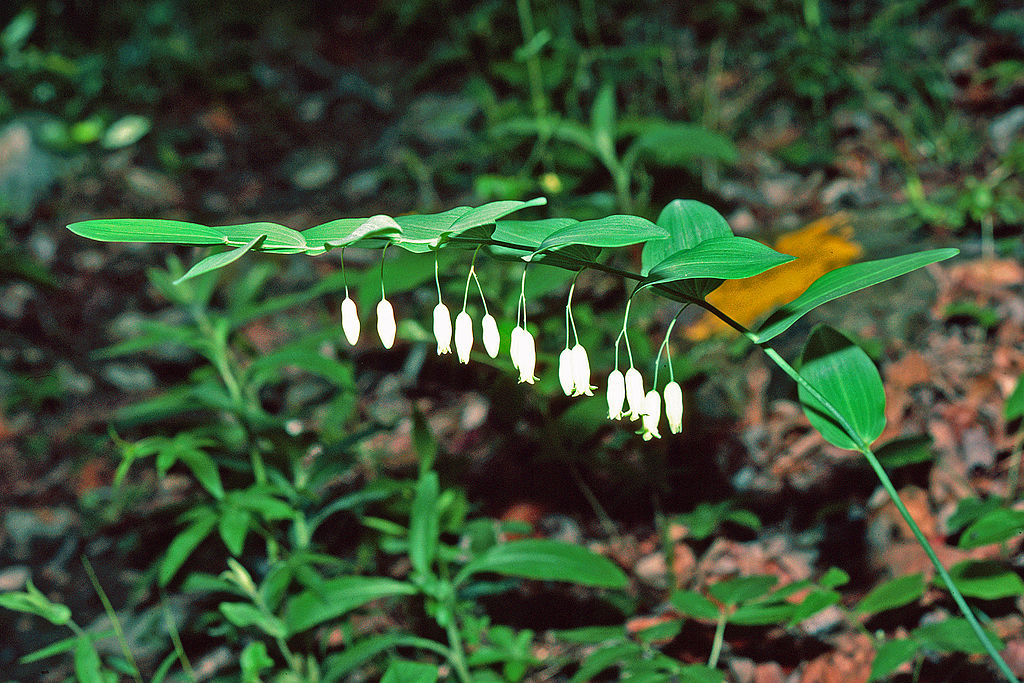
Photo Credit: Charles T. Bryson / Wikimedia Commons / CC BY 3.0
Solomon’s seal is a herbaceous perennial plant species. It blooms from late spring to early summer in attractive flowers of pink, white, and green. These flowers later turn into blackish berries that birds love.
As Solomon’s seal grows, it slowly spreads, making it an excellent ground cover. The plant’s foliage looks unique and adds diversity to your landscape.
Growth habit: Flower
Mature size: Up to 6 feet tall and 4 feet wide
Duration: Perennial
Foliage: Green
Sunlight needs: Partial to full shade
Soil preferences: Moist, well-drained soil
Water needs: High during summer and low during winter.
Potential hazards: Toxic to humans and pets
How To Choose the Best Native Plants for Knoxville?
The right plant for your Knoxville lawn depends on various factors, such as sunlight, soil, and water needs. Not just that.
You should know your location’s hardiness zone before purchasing a plant. Knoxville’s hardiness zone is 7a, meaning the average annual least temperature is between 0 and 5 degrees Fahrenheit. Since the plants listed here are native to Tennessee, they can thrive in cool weather.
Summing up, research thoroughly and choose a plant that you can maintain and that suits the characteristics of your lawn.
Where To Find Native Plants in Knoxville?
You can buy these plants from local nurseries. But wait! Before you visit your local garden center, make sure to take a look around your yard, as some of these native plants might be already growing there.
If there’s no native plant in your yard, you can visit these Knoxville nurseries.
Building a healthy and appealing landscape doesn’t just stop by choosing the best native plant. You should also select the best grass type for your Knoxville lawn.
If you wish to keep your yard lush and healthy, consider hiring Wikilawn’s lawn care experts.
Main Photo by: PxFuel